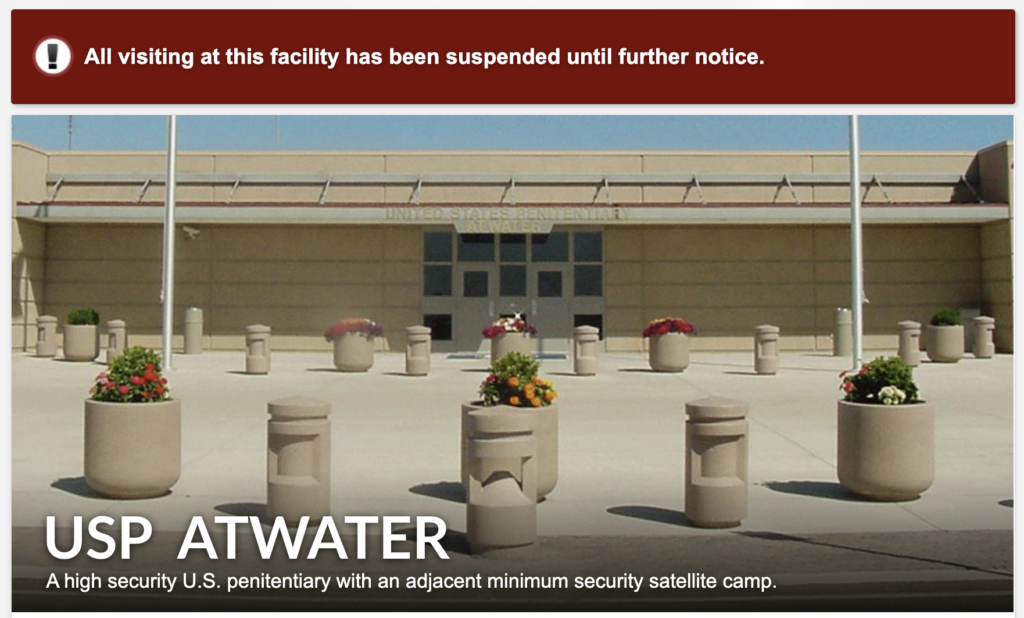Passive exposure to fentanyl, from skin contact or breathing in secondhand particles in the air, is a myth. There are media reports of law enforcement officers administering Narcan to themselves or each other all the time, but that does not mean they were in any danger. It means they administered Narcan.
CO culture is to do this indiscriminately, without knowing how to properly administer Narcan nor identify an opioid overdose. In one of the other two New York incidents, for example, officers were administered Narcan following suspected exposure near a prisoner “behaving irrationally,” which is language COs often use to describe overdose involving synthetic cannabinoids. In an opioid overdose, which is the only kind that responds to Narcan, by definition the person is unresponsive.
On August 9, a mailroom supervisor at USP Atwater, a high-security Federal Bureau of Prisons facility in California, died at a local hospital after he reported feeling ill earlier that day. The cause of death is still unknown and has not been linked to exposure to any contraband drugs in the mailroom, but media and the BOP itself have characterized it that way. Visits at Atwater have been suspended.
In prisons and jails across the country, contact with the outside world is being steadily replaced with virtual contact. Used books; all books; CDs; greeting cards and postcards; photographs; all mail except legal mail. And visits. All of this is accomplished the same way: Take a physical form of connection to the outside world, say friends and family of prisoners are exploiting it to smuggle in dangerous synthetic drugs, and replace it with a digital version offered by private contractor for a small fee. Or just take it away.
Archived at https://ghostarchive.org/archive/YOegp



Just more junk science, even tho it is technically true that fentanyl could be super dangerous in super tiny amounts. Not sure about the whole “touching” thing as opposed to it getting into some muscosal membrane. Then you got a problem fr
Notice it’s always cops getting “second hand exposure” but never EMS who regularly deal with overdoses. All these cops having exposure incidents are almost always either just having a stress reaction which they weren’t trained for, or they are using the drugs they confiscate.
My guess is one group is less likely to wash their hands and more likely to pick their noses than the other.
One group is taught that every time a cop is high it is because a single grain of fentanyl in a perps sweat got to their skin through their gloves and it is definitely not just because that cop did drugs.
The other group has enough training to know that second hand fentanyl exposure is nearly imposible unless you are actively rubbing your face in it.
It is not at all uncommon for cops to have straight up hypochondriac panic attacks because of the horror stories they all get told about fentanyl and then insist that the panic attack is OD symptoms and they need narcan.
Yeah this is my thought.
Touch the fent with PPE then touch any opening on your body that’s where this may come from.
Thinking about that dude eating reapers with gloves then rubbing his eyes. Done-zo.
deleted by creator